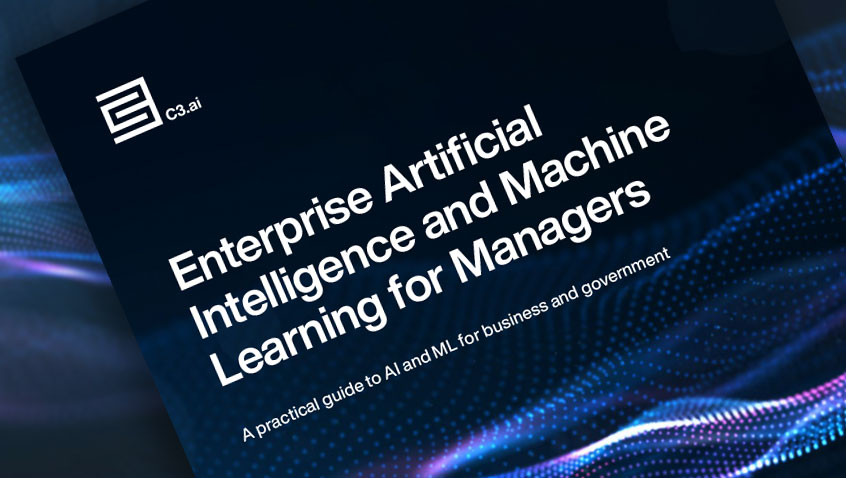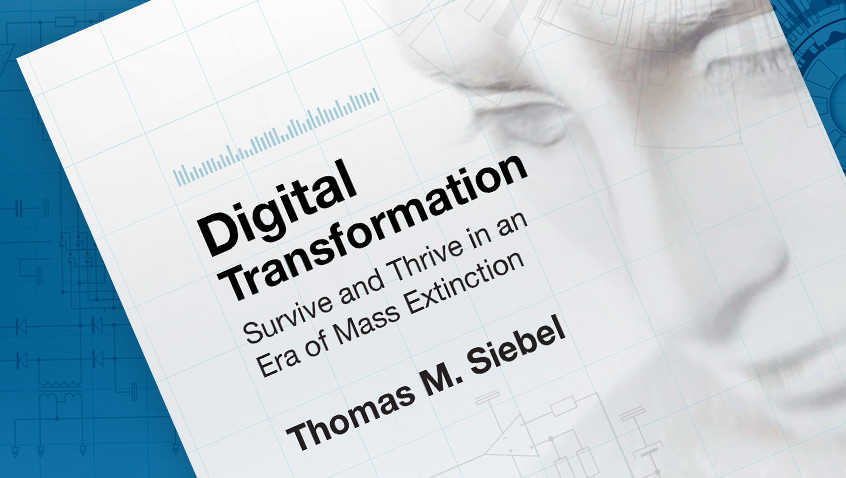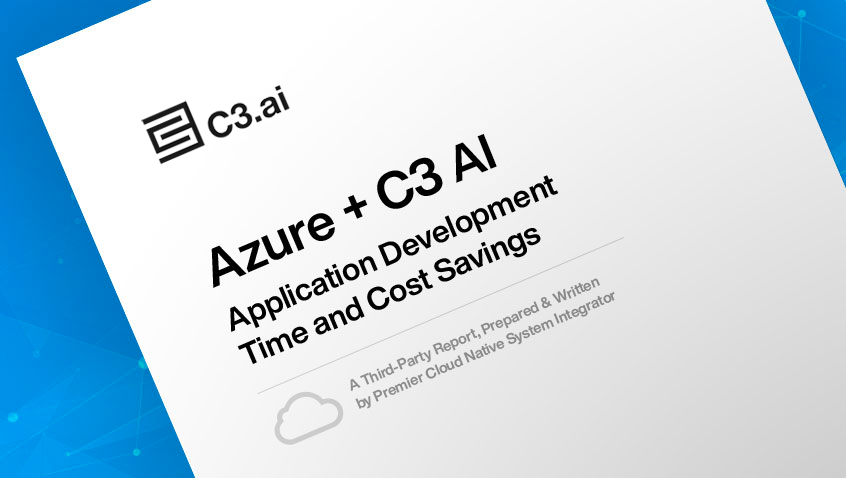- AI Software
- C3 AI Applications
- C3 AI Applications Overview
- C3 AI Anti-Money Laundering
- C3 AI Cash Management
- C3 AI Contested Logistics
- C3 AI CRM
- C3 AI Decision Advantage
- C3 AI Demand Forecasting
- C3 AI Energy Management
- C3 AI ESG
- C3 AI Health
- C3 AI Intelligence Analysis
- C3 AI Inventory Optimization
- C3 AI Process Optimization
- C3 AI Production Schedule Optimization
- C3 AI Property Appraisal
- C3 AI Readiness
- C3 AI Reliability
- C3 AI Smart Lending
- C3 AI Supply Network Risk
- C3 AI Turnaround Optimization
- C3 Generative AI Constituent Services
- C3 Law Enforcement
- C3 Agentic AI Platform
- C3 Generative AI
- Get Started with a C3 AI Pilot
- Industries
- Customers
- Events
- Resources
- Generative AI for Business
- Generative AI for Business
- C3 Generative AI: How Is It Unique?
- Reimagining the Enterprise with AI
- What To Consider When Using Generative AI
- Why Generative AI Is ‘Like the Internet Circa 1996’
- Can the Generative AI Hallucination Problem be Overcome?
- Transforming Healthcare Operations with Generative AI
- Data Avalanche to Strategic Advantage: Generative AI in Supply Chains
- Supply Chains for a Dangerous World: ‘Flexible, Resilient, Powered by AI’
- LLMs Pose Major Security Risks, Serving As ‘Attack Vectors’
- What Is Enterprise AI?
- Machine Learning
- Introduction
- What is Machine Learning?
- Tuning a Machine Learning Model
- Evaluating Model Performance
- Runtimes and Compute Requirements
- Selecting the Right AI/ML Problems
- Best Practices in Prototyping
- Best Practices in Ongoing Operations
- Building a Strong Team
- About the Author
- References
- Download eBook
- All Resources
- Publications
- Customer Viewpoints
- Blog
- Glossary
- Developer Portal
- Generative AI for Business
- News
- Company
- Contact Us
Glossary
- Artificial Intelligence
- AI Agents
- AI in Finance
- AI in Manufacturing
- Anomaly Detection
- Anti-Money Laundering
- Asset Performance Management
- Asset Reliability
- Demand Forecasting
- Digital Disruption
- Digital Transformation
- Digital Twin
- Elastic Cloud Computing
- Energy Management
- Enterprise AI
- Enterprise AI Platform
- Ethical AI
- Inventory Planning
- IoT Platform
- Know Your Customer (KYC)
- Machine Vision (Computer Vision)
- Model-Driven Architecture
- Multi-Cloud
- No Code
- Predictive Analytics
- Predictive Maintenance
- Process Optimization
- Production Scheduling
- Stochastic Optimization
- Supply Chain Management
- Type System
- Data Unification & Management
- Machine Learning (A to L)
- Artificial General Intelligence
- Bias
- Canonical Schema
- Canonical Transform
- Classification
- Classifier
- Classifier Performance
- Clustering
- Coefficient of Discrimination, R-Squared (R2)
- Convolutional Neural Network (CNN)
- Correlation
- Data Cleansing
- Data Labels
- Data Lineage
- Deep Learning
- Dimensionality Reduction
- Explainable AI
- F1 Score
- False Positive Rate
- Feature Engineering
- Feedback Loop
- Field Validation
- Gaussian Mixture Model (GMM)
- Generalized Linear Models
- Gradient-Boosted Decision Trees (GBDT)
- Features
- Ground Truth
- Holdout Data
- Hyperparameters
- Information Leakage
- LIME: Local Interpretable Model-Agnostic Explanations
- Linear Regression
- Loss Function
- Low-Dimensional Representation
- Machine Learning (M to Z)
- Mean Absolute Error
- Mean Absolute Percent Error
- Machine Learning Pipeline
- Model Drift
- Model Prototyping
- Model Training
- Model Validation
- Normalization
- Overfitting
- Precision
- Problem Tractability
- Random Forest
- Recall
- Receiver Operating Characteristic (ROC) Curve
- Regression Performance
- Regularization
- Reinforcement Learning
- Reporting Bias
- Ridge Regression
- Root Mean Square Error (RMSE)
- Selection Bias
- Shapley Values
- Supervised Machine Learning
- Tree-Based Models
- Underfitting
- Unsupervised Machine Learning
- XGBoost
Elastic Cloud Computing
What is Elastic Cloud Computing?
Elastic cloud computing is a 21st century innovation that enables on-demand, metered usage (“pay for what you use”) of virtually any amount of data storage and computing resources, generally accessible over the internet. It is one of four core technology vectors – along with big data, the internet of things, and artificial intelligence – that are driving and enabling digital transformation. The term “elastic” refers to the ability to easily and rapidly scale up or down the usage of resources depending on an organization’s requirements. First offered by Amazon Web Services (AWS) in 2006, other leading cloud service providers (CSPs) include Microsoft Azure, Google Cloud, and IBM Cloud.
CSPs are innovating at a very fast pace while also aggressively competing on price. Today organizations can access a growing array of cloud services and microservices, including technologies such as compute resources employing graphics processing units (GPUs) that dramatically accelerate computation for enterprise AI applications. CSPs are making multiple variants of their services available, such as specialized services for secure government data and operation (e.g., AWS GovCloud and Azure Government).
Why is Elastic Cloud Computing Important?
Elastic cloud computing has revolutionized the economics of computing. The compelling financial and time-to-value benefits of elastic cloud computing have resulted in a rapid adoption pace. CSPs enable organizations to avoid the expense of building or adding capacity to their own data centers, and to rapidly access resources as needed. Many organizations are either closing their own data centers and moving their IT operations entirely to cloud service providers such as AWS and Azure, or they are migrating significant percentages of their IT workloads to cloud platforms.
By providing virtually unlimited amounts of data storage and computing resources at very low cost – which continues to fall as the leading CSPs compete against one another – the cloud makes it affordable for organizations to work with increasingly large data sets and to deploy enterprise AI applications at cloud scale. In this regard, elastic cloud computing is one of the most important innovations of the last 20 years that has democratized computing while enabling whole new classes of applications.
How C3 AI Enables Organizations to Leverage Elastic Cloud Computing
C3 AI provides leading technology that enables organizations to rapidly build and deploy enterprise AI applications at scale on any of the elastic cloud services. We closely partner with the leading elastic cloud providers – Azure, AWS, Google Cloud, and IBM Cloud – to deliver seamless enterprise AI solutions that fully leverage the most advanced capabilities of these cloud platforms. C3 AI provides the C3 AI® Platform a complete, end-to-end platform for designing, developing, deploying, and operating enterprise AI applications at industrial scale. With the C3 AI Platform, organizations can accelerate development of enterprise AI applications on cloud platforms including AWS and Azure 25-fold, and deploy in one-tenth the time of other approaches. Because of C3 AI’s revolutionary model-driven architecture, applications developed with the C3 AI Platform can run on any cloud with little or no change to the application code.
C3 AI also delivers a portfolio of prebuilt, SaaS enterprise AI applications for a growing number of use cases such as predictive maintenance, inventory optimization, fraud detection, anti-money laundering, and more. Some of the world’s largest organizations – including Shell, the US Department of Defense, and Koch Industries – use C3 AI technology to drive digital transformation initiatives that significantly reduce costs, increase asset availability and reliability, improve human safety, and enhance customer satisfaction. These applications run out of the box on the leading cloud platforms. A C3 AI application can be configured to take advantage of microservices available from different cloud providers – for example, AWS’s image recognition can be combined with Google’s natural language processing in the same application.



